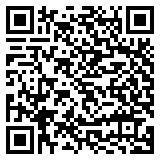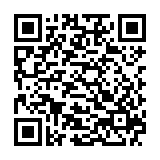In our diverse and interconnected world, the use of constructed languages (conlangs) has become more prevalent, creating unique challenges for interpreters working in multilingual spaces. This article explores the scenarios where interpreters encounter conlangs in multilingual spaces and delves into the distinctive challenges they face in these linguistic landscapes.
Understanding Conlangs
Before we delve into the challenges, let’s briefly understand what constructed languages are. Conlangs are artificial or constructed languages that are specifically created for communication purposes. Examples include Klingon from Star Trek and Dothraki from Game of Thrones. While constructed languages are often associated with fictional worlds, they can also emerge in real-world scenarios, adding complexity to language interpretation.
Scenarios of Conlangs in Multilingual Spaces
Media and Entertainment
In the realm of media and entertainment, conlangs are frequently employed to add authenticity to fictional cultures and worlds. Interpreters may find themselves facing challenges when encountering these languages in scripts, interviews, or fan events. The need to accurately convey the intended meaning in these unique linguistic landscapes requires a deep understanding of the conlang’s grammar, syntax, and cultural context.
International Events and Conferences
Global conferences and events often feature participants from diverse linguistic backgrounds. In some cases, organizers may introduce conlangs in multilingual spaces to foster inclusivity or as part of a themed event. Interpreters tasked with facilitating communication face the challenge of not only translating between natural languages but also interpreting messages conveyed in conlangs accurately.
Online Communities
With the rise of online communities and subcultures, individuals may create and use conlangs for various purposes, such as secret societies, artistic expression, or online gaming. Interpreters engaging with these communities may encounter challenges in translating and interpreting messages that transcend traditional linguistic boundaries.
Challenges for Interpreters
Limited Resources
Unlike natural languages with extensive dictionaries and language resources, conlangs may have limited documentation. Interpreters may struggle to find accurate and reliable sources to aid in the interpretation process, leading to potential misunderstandings and miscommunications.
Cultural Nuances
Conlangs are often intricately tied to the cultures they represent. Interpreters must navigate the cultural nuances embedded in the conlang, understanding the context in which certain phrases or expressions are used. Failure to grasp these cultural subtleties may result in misinterpretations that can have significant consequences.
Fluidity and Evolution
Conlangs, especially those used in dynamic online communities, may evolve and change rapidly. Interpreters need to stay updated on the latest developments within the conlang to ensure accurate interpretation. The fluid nature of conlangs adds an extra layer of complexity to the interpreter’s role.
Expressive Challenges
Some conlangs are created not only for communication but also for artistic expression. Interpreters may find it challenging to convey the emotional nuances embedded in the conlang, as these may not have direct equivalents in natural languages.
Wrapping Up on Conlangs in Multilingual Spaces
In the evolving landscape of global communication, interpreters are faced with the task of navigating not only the complexities of natural languages but also the challenges presented by constructed languages. Conlanging in multilingual spaces adds an extra layer of complexity to interpretation, requiring adaptability, cultural sensitivity, and a deep understanding of the evolving linguistic landscapes. As our world continues to embrace linguistic diversity, interpreters play a crucial role in bridging the communication gap, even in the realm of constructed languages.





0 Comments